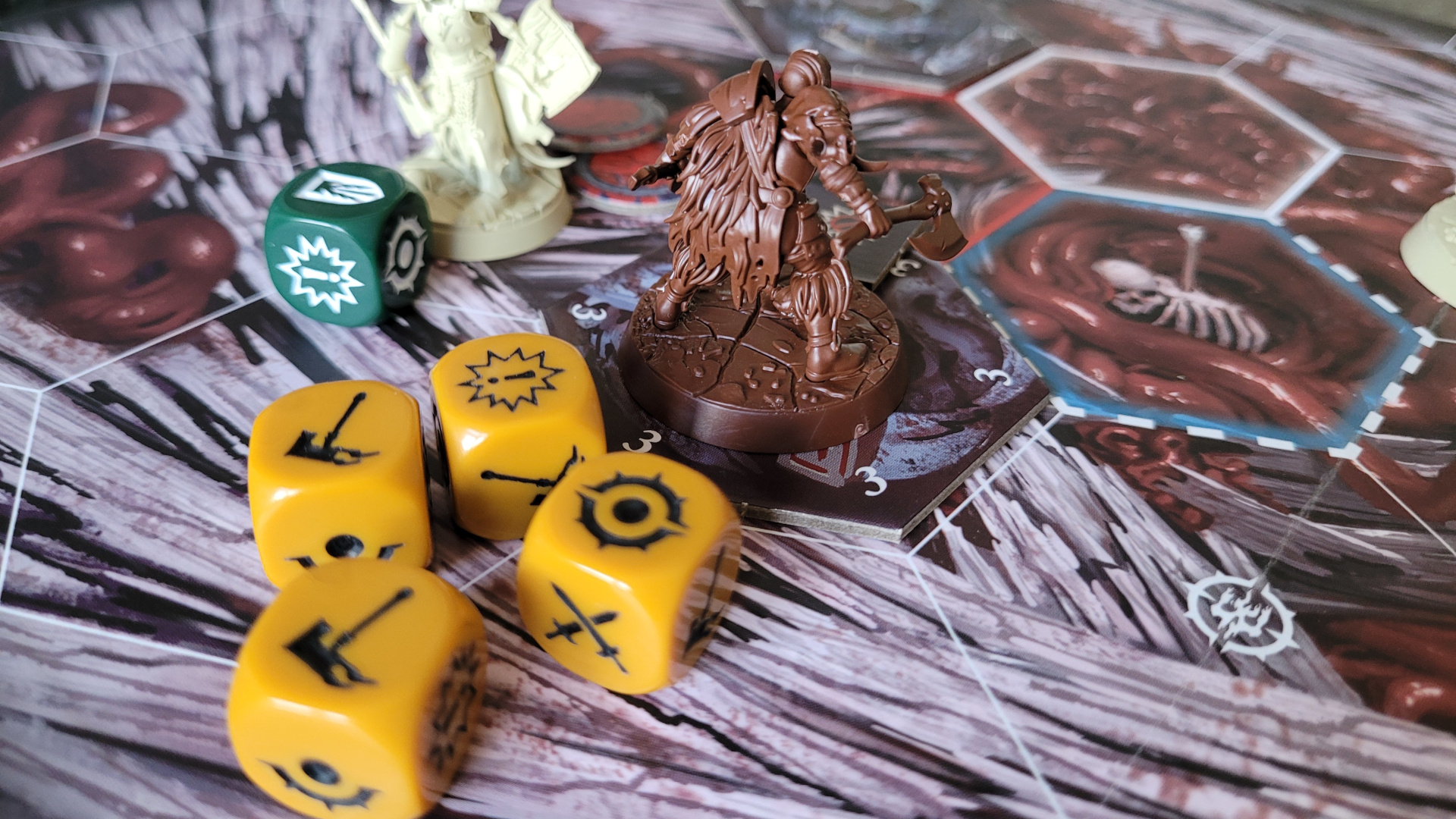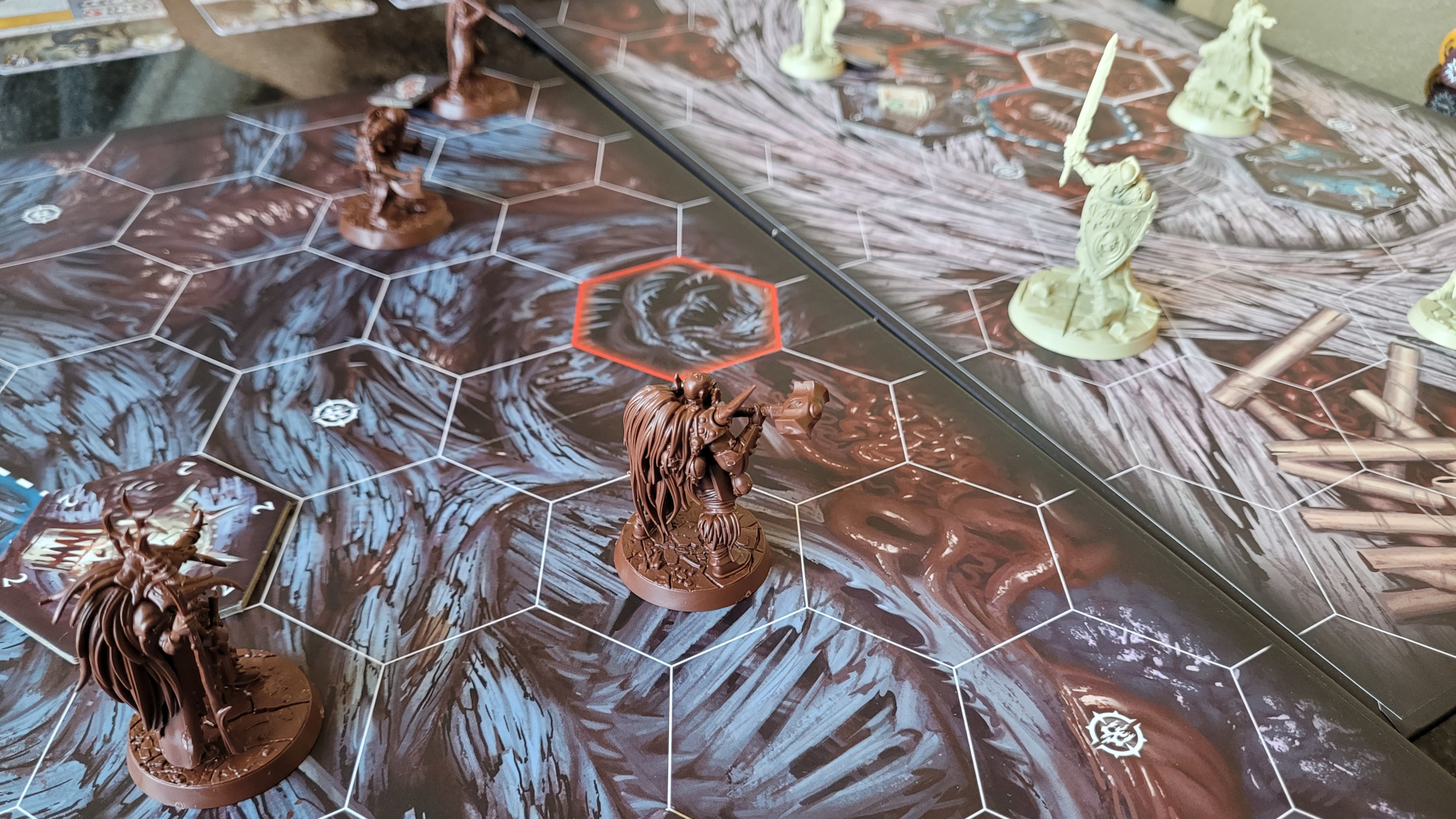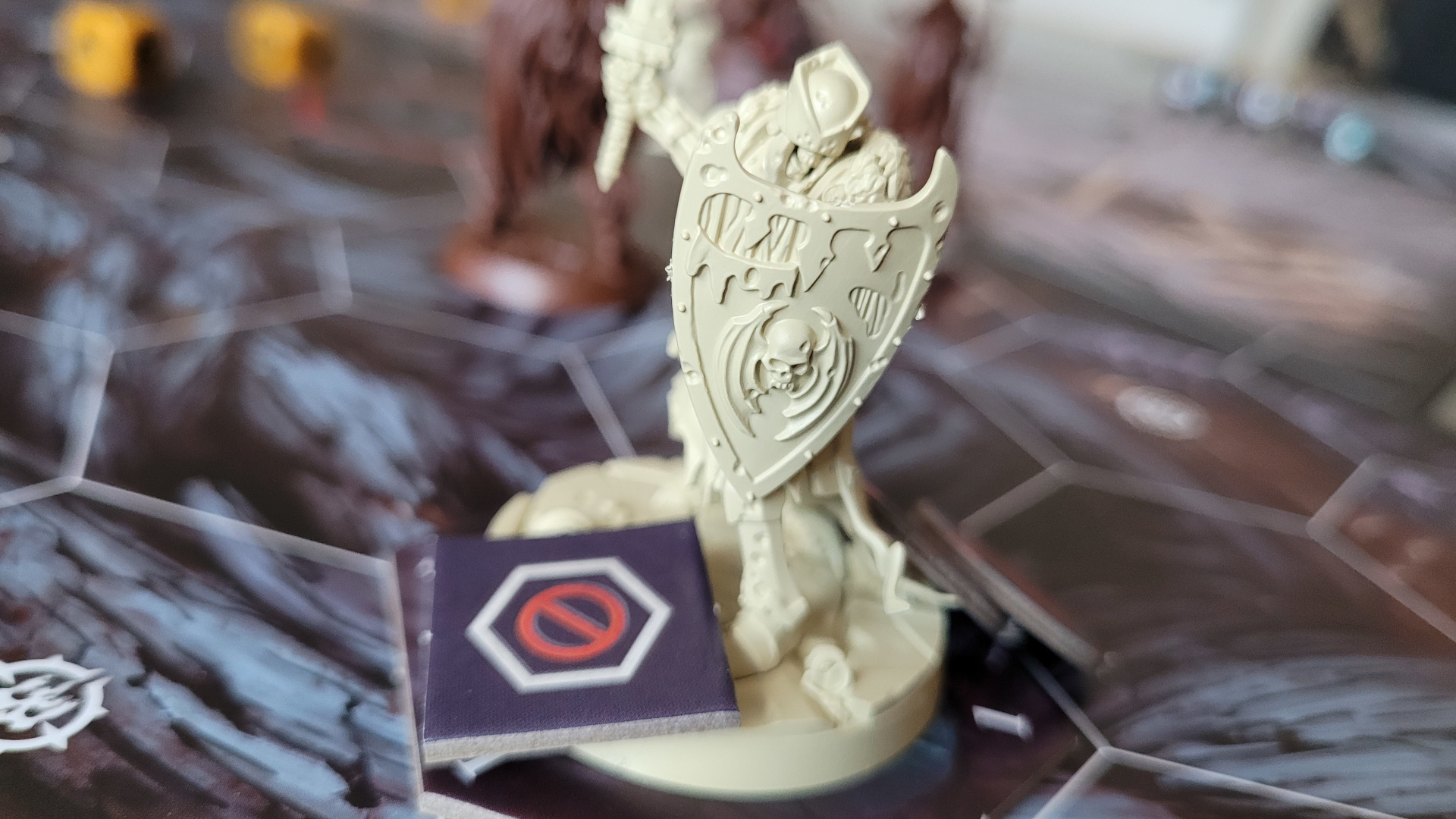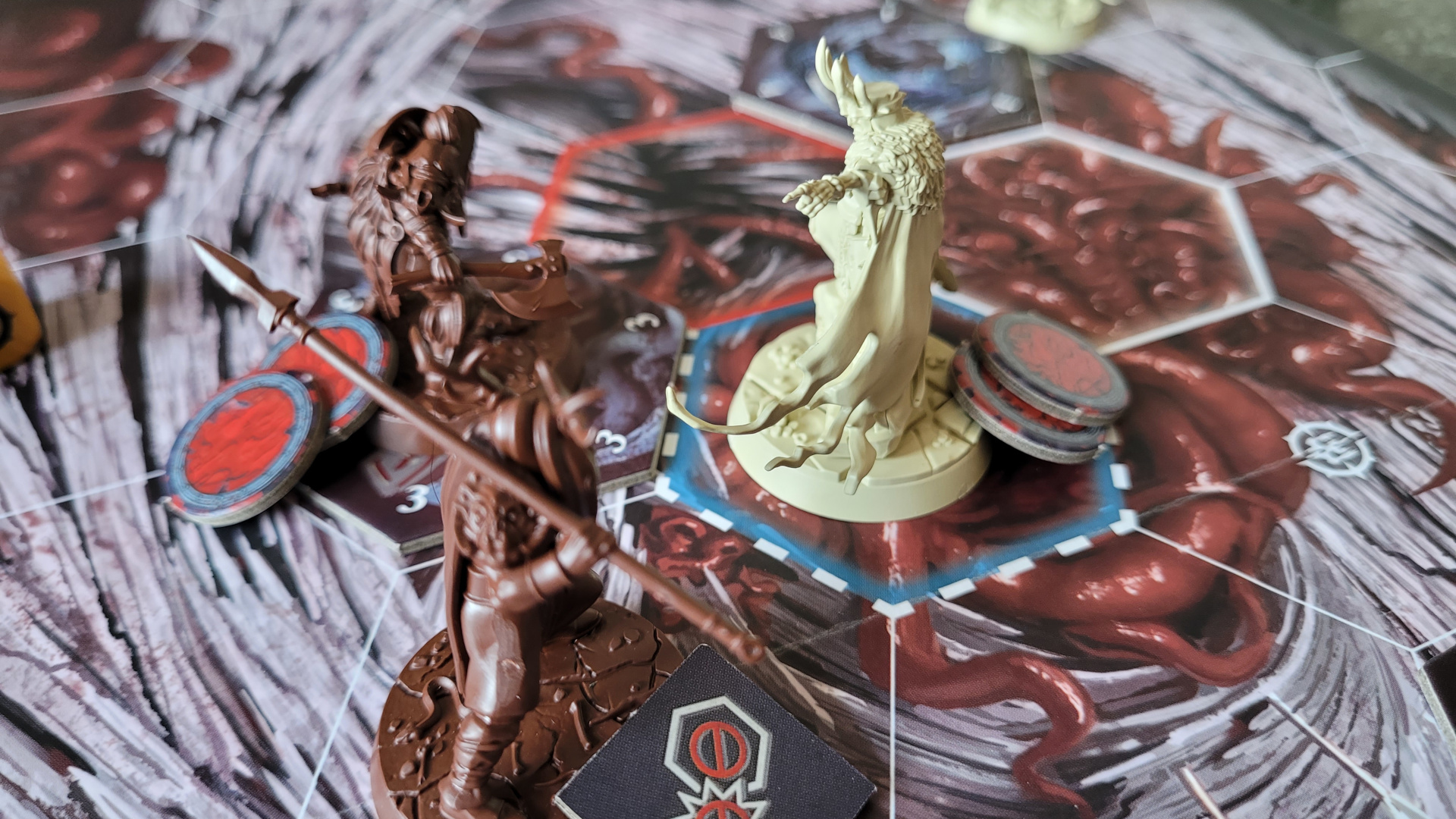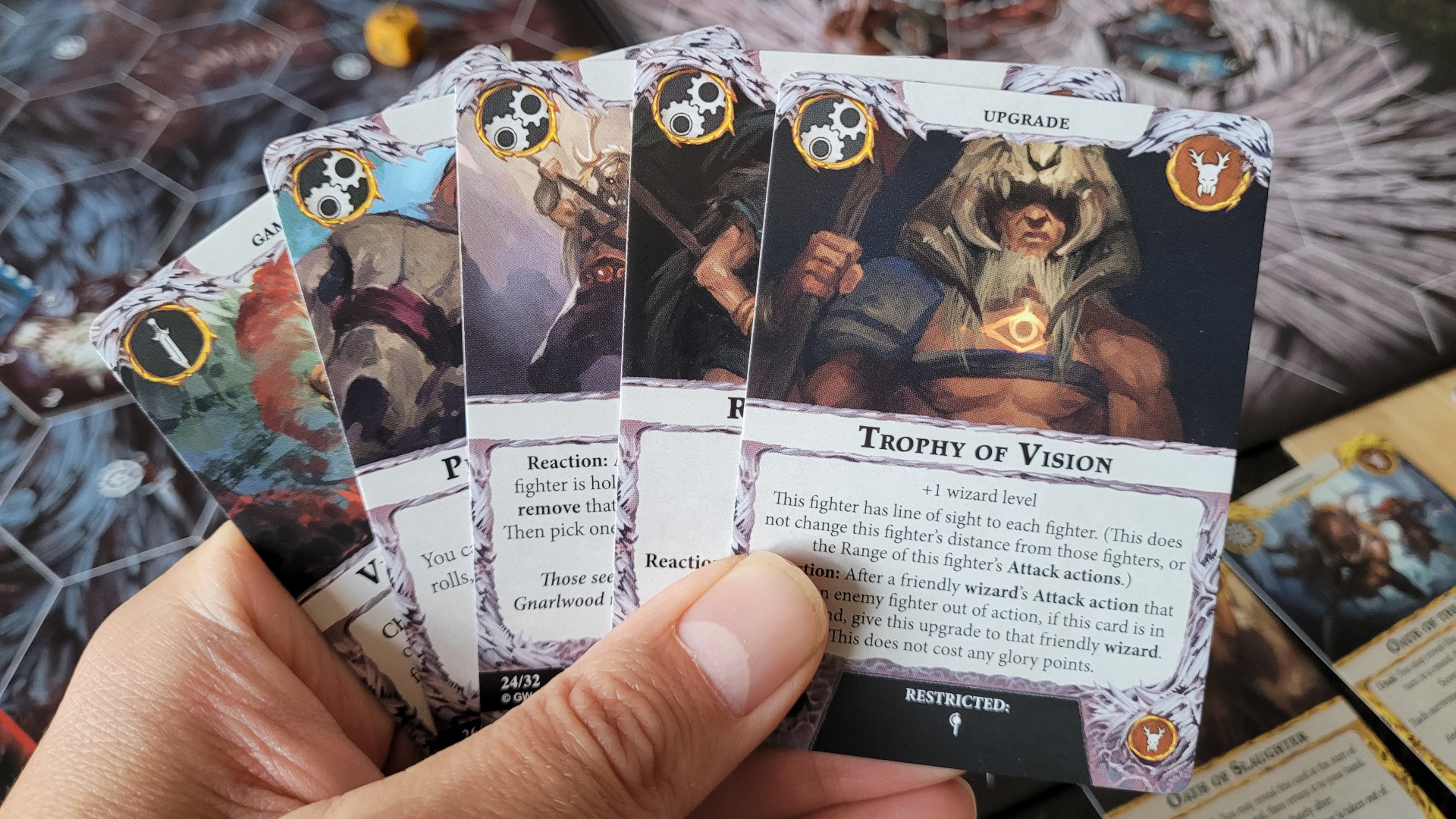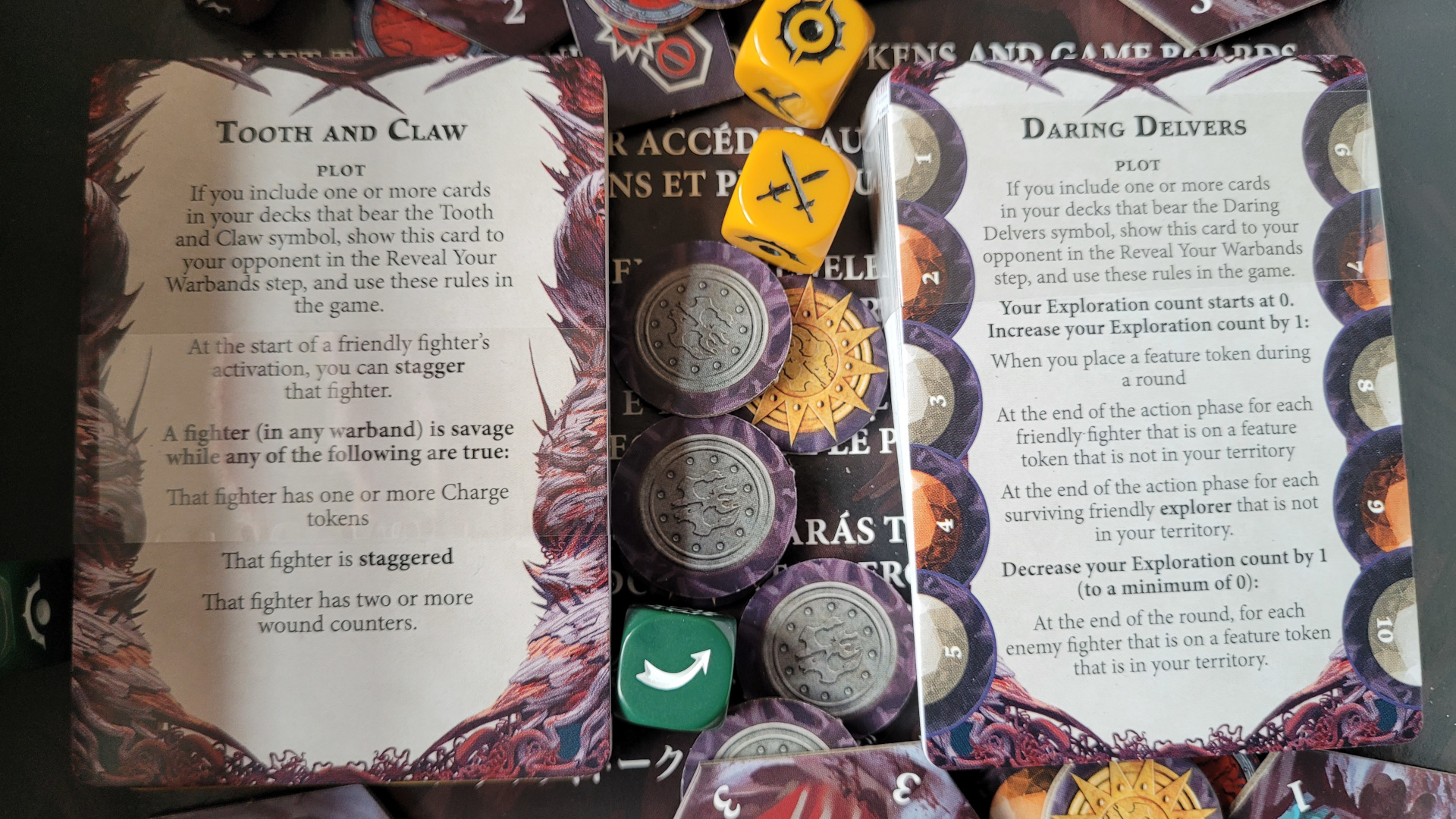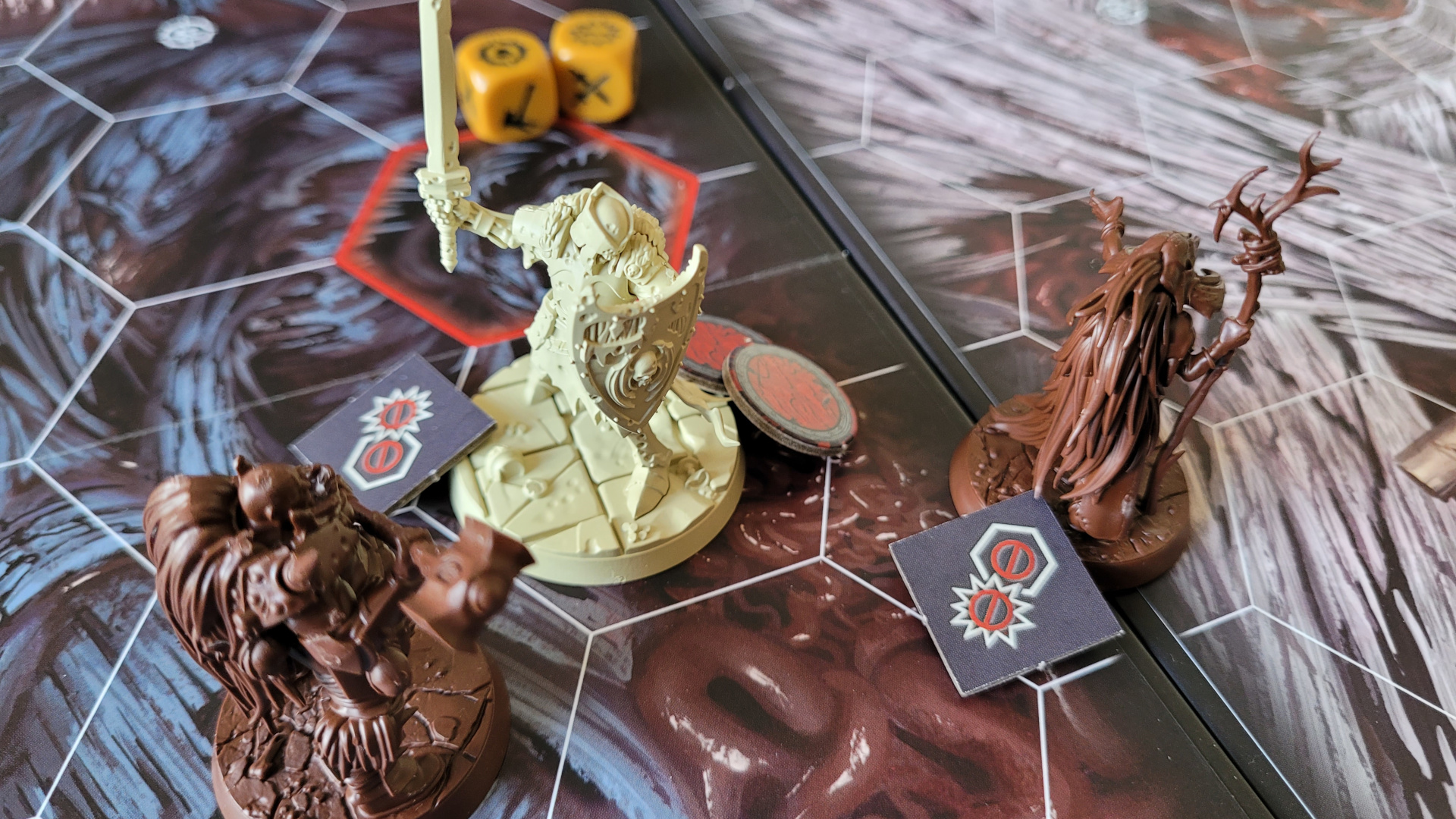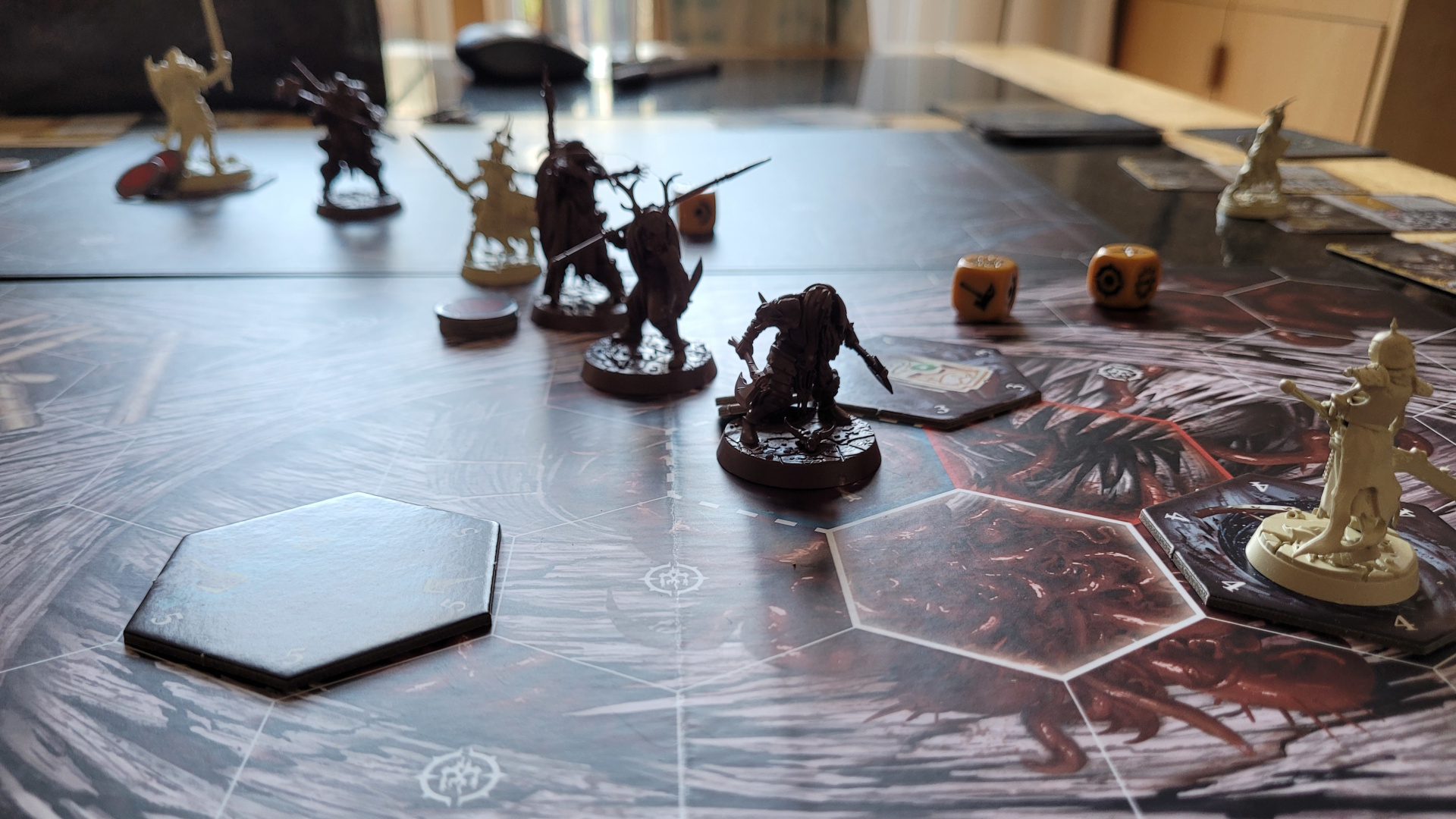Warhammer Underworlds Gnarlwood is the latest offering in Games Workshop’s line of card-driven skirmish games set in Age of Sigmar’s Mortal Realms. The series puts the company’s fabled high-quality figures into a board game, making is a very different beast from the open tabletop wargames like Warhammer 40k that are the publisher’s mainstay.
Since you can build your own card decks, as well as using provided pre-built ones, Underworlds offers plenty of strategic and tactical crunch alongside the excitement of rolling its custom dice in a much more manageable time-frame and with far fewer figures to paint.
What is Warhammer Underworlds Gnarlwood?
The previous two Warhammer Underworlds sets, Harrowdeep and Nethermaze, set the action in an underwater labyrinth. Gnarlwood ties the game more strongly into the Age of Sigmar setting by moving proceedings into the bestial Realm of Ghur. Above ground, this is a forest of blood-hungry trees, while beneath their roots sits a tunnel network burrowed around the ruins of ancient civilizations. The two sides of the included boards allow you to play out battles in either, as you choose.
There are few changes to the rules we’ve come to know and love. Players duke it out over an incredibly tight three rounds of just three model activations apiece. You score for taking out enemy models, but the bulk of your points come from meeting the requirements of objective cards. Doing so requires a careful balance of manoeuvre, combat and card play, as well as luck with the dice – since models can support each other in battle and may need to claim objective hexes. The only major alteration to the rules is that models can now move more than once, giving you a bit more flexibility.
Warhammer Underworlds Gnarlwood models
As is usual for a Warhammer Underworlds core box, Gnarlwood contains two new warbands of models. First are the Sons of Velmorn – once a noble family, now become undead guardians. Second are the Gnarlspirit Pack, a band of animalistic barbarians and their shaman. Both look absolutely fantastic, with imposing yet lifelike poses.
They have a distinctive aesthetic, tending away from the fragile, super-dynamic sculpts for a more old-school sensibility. It’s a singular look, combining the publisher’s trademark detail with a sense of classic fantasy, but it makes them easier to put together, too. A modicum of care should ensure a breakage-free assembly, and you really can do it without glue if you want.
Sons of Velmorn
The Sons of Velmorn are the easier of the two to play, while still bringing fresh tactical challenges to enjoy. All the characters ‘inspire’ (i.e. level up to their upgraded variant) by scoring a critical hit, which seems pretty random. However, three of them get automatic inspires, one per turn.
Their peculiarity is that their leader, King Velmorn, gets a command counter when he activates. This lets him support his lesser minions regardless of the distance, a handy ability that leverages an under-used game rule and adds an interesting element of activation order.
Many of the warband’s cards help increase your chances of a critical via a re-roll or build on Velmorn’s command tokens, for example:
- Fearless Lunge is an upgrade that lets the fighter re-roll a two dice attack, although it leaves them staggered.
- Rise Again allows you to spend a command counter to put a model that’s out of action back on the board.
- Imperious Will gives your leader a command counter and a guard counter.
Gnarlspirit Pack
Running the Gnarlspirit Pack can be pretty confusing due to their plethora of powers that reference each other’s cards. Essentially, when activated they can be given a spirit counter which gives them a new keyword, “beast” and a special power unique to that fighter. You can also remove the spirit counter when they’re activated, and that’s the precursor to them becoming inspired.
As you might have guessed, a lot of the Gnarlspirit power cards make use of that beast keyword, such as:
- In Control lets you push any beasts one hex, so long as at least one of your fighters is not a beast.
- Raging Companion is an upgrade that can be given to a beast wizard, which gives them an extra 3 dice attack reaction after their spell attack.
- Several ploy cards can buff any fighter but give extra bonuses if they’re a beast, like Fierce Competition which adds one or two attack dice and Spurred Onwards which adds one or two movement.
Warhammer Underworlds Gnarlwood cards
It’s now standard for each warband to come with a Rivals deck, a pre-built block of cards which is supposed to be balanced against other Rivals decks, both existing and future. As expected, there are two included here.
However, in a new twist all the additional universal cards in the set are organised into two new Rivals decks, giving you a choice of four. Each has an included plot card which activates extra rules and keywords that work with the deck.
Tooth and Claw, for example, lets you stagger a fighter, and gives all staggered, wounded or charged fighters the savage keyword. Cards that work with this include:
- Beastcaller, an upgrade that allows the owner to count as supporting a savage character that is the target of an attack,
- The ploy Call to Heel, which lets you push a beast or savage fighter, with extra movement available if it moves next to a friendly figure.
- Ferocious Rampage, an objective that will score you two points if all your fighters are savage or inspired and not holding any objectives.
The other deck, Daring Delvers, offers you more flavour in exchange for more complexity. The accompanying plot allows you to accumulate an exploration count, which you can increment by adding features to the board and claiming ones in enemy territory. Fighters that do this also gain the explorer keyword. You can then use the count and keyword along with your cards, for example:
- Solid Position stops your fighters in enemy territory from being pushed, making it easier for them to stay on features.
- Various upgrade cards can make your fighters into explorers, who can then use cards like Significant Find which allows them to place a feature token.
- Uncovered Secrets scores you a sweet three points if you can push your exploration count to ten.
These extra decks don’t just give you more variety out of the box. Part of the motivation for providing additional Rivals decks is to help you taste the new game mode, Nemesis, which blends the plug-and-play simplicity of Rivals with a bit of deckbuilding. The idea is simple: you make your own deck, but only from a combination of a specific warband’s Rivals deck and one of these new, universal, Rivals decks.
So you’re building from a pool of 64 cards, as opposed to the several hundred allowed for the current season and the several thousand for the game as a whole. That makes it far more digestible, while still providing the fun factor of trying to work out potential combos. Either faction can work with either universal deck, but it’s clear that the Gnarlspirit Pack is a better match for Tooth and Claw, while Daring Delvers has cards that can help the Sons of Velmorn eke out those critical hits.
Should I buy Warhammer Underworlds Gnarlwood?
Whether you want to invest in Warhammer Underworlds Gnarlwood depends on whether you’re a dedicated player or someone who dabbles and is perhaps new to the game as a whole.
Existing fans of the series might not be blown away by the power levels of the included warbands. But they do both offer fresh tactical challenges to enjoy, and you’ll want the new universal Rivals decks so you can have a go with the new nemesis game mode. You may also want the latest rulebook for its minor changes and clarifications.
Less experienced players might be better off with the Starter Set. However, Gnarlwood is a much better introductory box than other core sets because the rules have been split into basic and advanced boxouts. There’s still a lot to learn here – the advanced rules really just cover edge cases – but it’s that bit more newbie-friendly. And they’ll really enjoy the extra flexibility of having four decks to play with and possibly combine using nemesis.
In both cases, Gnarlwood is one of the best core sets to come out for the game, not least thanks to those awesome classic miniatures.
Source: Wargamer



